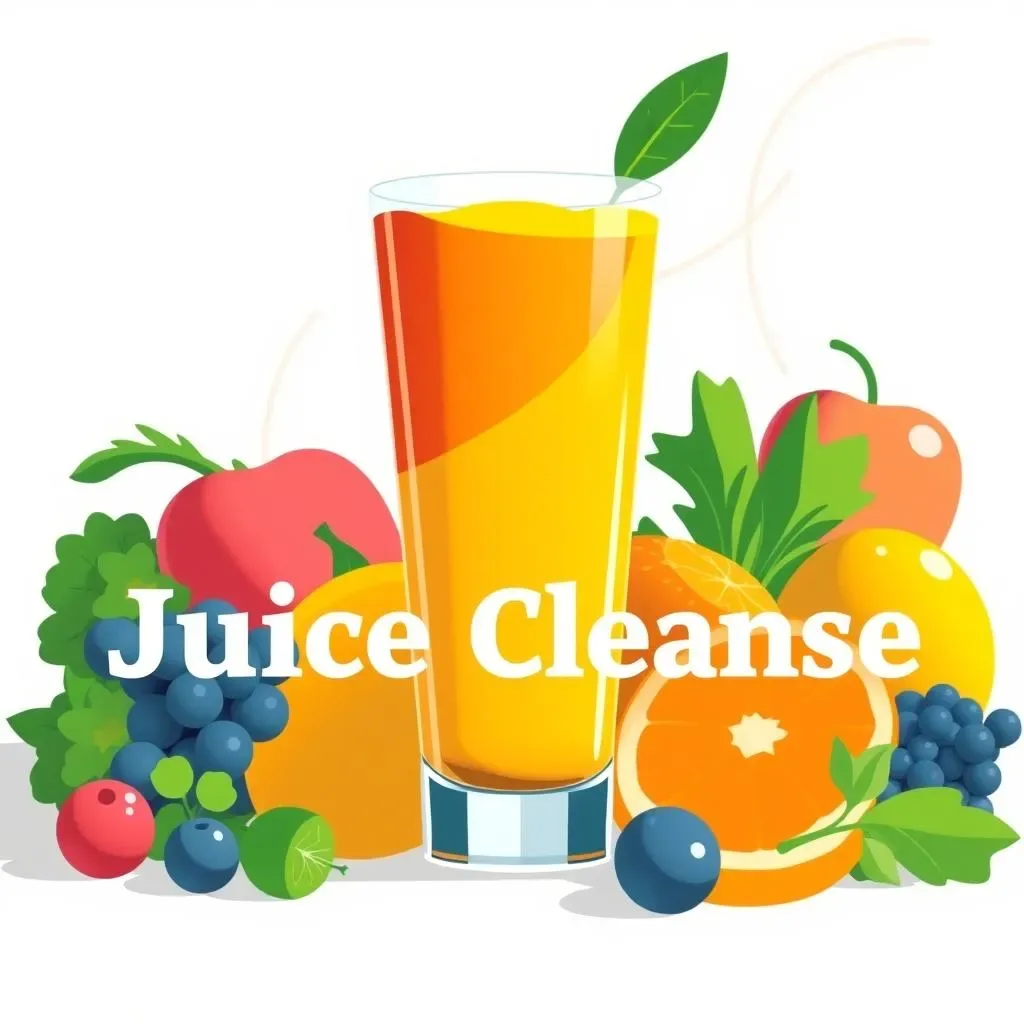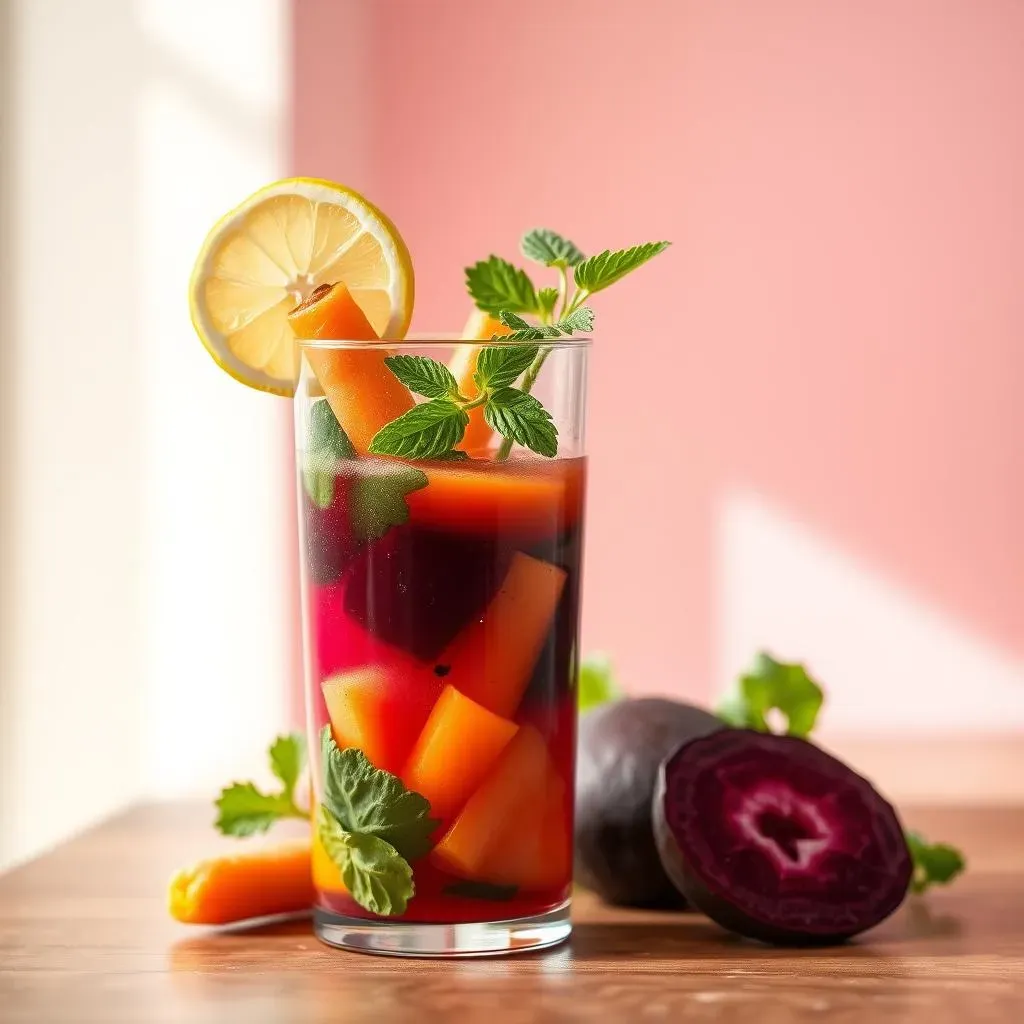Table of Contents
Thinking about a 3-day juice cleanse for weight loss? You're not alone! Many people turn to juice cleanses hoping for a quick way to shed pounds and feel healthier. But before you grab that blender, let's explore the reality of 3-day juice cleanse weight loss. This article will cut through the hype and give you the straight facts. We'll examine what actually happens to your body during a 3-day juice cleanse, exploring both the potential benefits and the very real downsides. We'll also look at how to create a safe and effective plan if you decide to give it a try. Remember, a juice cleanse isn't a magic bullet, and sustainable weight loss involves a holistic approach to diet and lifestyle. So, let's get started and uncover the truth about 3-day juice cleanse weight loss – are the benefits worth the risks? Prepare to learn everything you need to know before you embark on this short-term dietary change.
Understanding 3Day Juice Cleanses for Weight Loss

Understanding 3Day Juice Cleanses for Weight Loss
What is a 3-Day Juice Cleanse?
A 3-day juice cleanse, as the name suggests, involves consuming only fruit and vegetable juices for three consecutive days. It's a short-term dietary restriction designed to give your digestive system a break and potentially lead to weight loss. The idea is that by eliminating solid foods, you'll reduce your calorie intake and allow your body to focus on cleansing and detoxification. Many people find these cleanses appealing for a quick reset, but it's important to approach them with realistic expectations. Check out our 3-day detox juice cleanse plan for more details.
However, it's crucial to understand that this isn't a sustainable long-term solution for weight management. While you might see a temporary decrease on the scale (mostly due to water weight loss), this weight often returns once you resume your regular diet. For a deeper dive into the speed of results, see our post on how fast detox juice works.
Weight Loss Mechanisms in 3-Day Juice Cleanses
The primary mechanism behind weight loss during a 3-day juice cleanse is the significant reduction in calorie intake. Juices, while nutrient-rich, are generally lower in calories than solid foods, particularly those high in fiber and protein. This calorie deficit forces your body to tap into its stored energy reserves (fat), resulting in weight loss – at least temporarily. Furthermore, the high water content in juices can also lead to a temporary reduction in water weight, contributing to the perceived weight loss.
However, this weight loss is often misleading. Much of what you lose is water weight, not actual fat. Once you return to your normal diet, your body will quickly replenish its water stores, and the weight will likely come back. Remember, sustainable weight loss is about making gradual changes to your diet and lifestyle, not about quick fixes. Planning your cleanse effectively is key. Consider reading our guide to a 3-day detox juice cleanse to lose weight for helpful tips.
Type of Weight Loss | Mechanism | Sustainability |
|---|---|---|
Water Weight | Reduced calorie intake, high water content in juices | Not sustainable |
Fat Loss | Calorie deficit forcing body to use stored fat | Potentially sustainable with long-term changes |
Nutrient Intake and Potential Deficiencies
While juice cleanses can be a source of vitamins and minerals, they often lack the essential protein, fiber, and healthy fats found in a balanced diet. These nutrients are crucial for maintaining muscle mass, supporting digestive health, and overall well-being. A prolonged deficiency in these nutrients can lead to fatigue, muscle loss, and other negative health consequences. A well-planned cleanse should focus on nutrient-dense juices, but even then, it's not a substitute for a healthy, varied diet.
It’s also important to remember that everyone’s body reacts differently to juice cleanses. Some people might feel energized and lighter, while others might experience fatigue, headaches, or digestive issues. Before starting any cleanse, it's always best to talk to your doctor or a registered dietitian to ensure it aligns with your individual health needs. They can help you assess any potential risks and create a plan that minimizes negative side effects. We've got a great 3-day juice cleanse diet guide to help you plan.
- Fiber
- Protein
- Healthy Fats
Potential Benefits and Downsides of a 3Day Juice Cleanse

Potential Benefits and Downsides of a 3Day Juice Cleanse
Potential Benefits: A Temporary Reset?
Some people report feeling lighter and more energized after a 3-day juice cleanse. This could be attributed to a temporary reduction in bloating and improved digestion. The high intake of vitamins and minerals from fruits and vegetables might also contribute to a boost in energy levels. However, it's important to remember that these are subjective experiences, and the effects are usually short-lived. For a more in-depth look at the potential upsides, check out our article on benefits of detox juice.
Another potential (though temporary) benefit is a reduction in processed food cravings. By eliminating solid foods for three days, your body might experience a break from the strong flavors and addictive qualities of processed snacks and meals. This temporary reset could make it easier to transition back to a healthier diet, but it's not a long-term solution for curbing cravings. For a structured approach, consider our 3-day cleansing detox diet plan.
- Improved digestion (temporary)
- Increased energy levels (temporary)
- Reduced cravings for processed foods (temporary)
Potential Downsides: The Reality Check
On the flip side, 3-day juice cleanses can have several downsides. The most significant is the potential for nutrient deficiencies. Juices, while packed with certain vitamins and minerals, lack the essential protein, fiber, and healthy fats found in whole foods. These deficiencies can lead to fatigue, muscle loss, and digestive problems. A poorly planned cleanse could even worsen existing health conditions. Always consult a doctor before starting any cleanse, especially if you have pre-existing health issues.
Furthermore, the weight loss experienced during a 3-day juice cleanse is often temporary and primarily due to water weight. Once you return to your regular diet, this weight usually comes back. This can be discouraging and lead to feelings of failure, which can be detrimental to long-term weight management goals. To understand the nuances of weight fluctuations, explore our guide on how much weight loss to expect.
Potential Downside | Explanation | Mitigation Strategies |
|---|---|---|
Nutrient Deficiencies | Lack of protein, fiber, and healthy fats | Choose nutrient-rich juices, consult a dietitian |
Temporary Weight Loss | Primarily water weight, not fat loss | Focus on sustainable lifestyle changes |
Digestive Issues | Sudden dietary change can upset gut flora | Gradual transition, high-fiber juices |
Creating a Safe and Effective 3Day Juice Cleanse Plan

Creating a Safe and Effective 3Day Juice Cleanse Plan
Choosing Your Juices Wisely
The key to a safe and effective 3-day juice cleanse lies in selecting the right ingredients. Focus on nutrient-dense fruits and vegetables that offer a good balance of vitamins, minerals, and antioxidants. Leafy greens like spinach and kale are excellent choices, as are berries, citrus fruits, and root vegetables like beets and carrots. Avoid sugary fruits like bananas and mangoes, which can spike your blood sugar levels. Aim for a variety of colors to ensure you're getting a wide range of nutrients. Need some inspiration? Check out our 3-day detox juice recipes for ideas!
Remember, the goal isn't just to lose weight, it's to nourish your body while giving your digestive system a break. Think of it as a temporary reset, not a crash diet. A well-balanced juice cleanse should provide your body with the essential nutrients it needs, even without solid foods. For a comprehensive shopping list, take a look at our 3-day juice cleanse shopping list to make sure you've got everything you need.
- Leafy greens (spinach, kale)
- Berries (strawberries, blueberries)
- Citrus fruits (oranges, lemons)
- Root vegetables (beets, carrots)
Hydration and Electrolyte Balance
Staying properly hydrated is crucial during a 3-day juice cleanse. Juices alone won't provide enough fluids, so make sure to drink plenty of water throughout the day. You might also consider adding electrolytes to your water, especially if you experience any symptoms of dehydration, such as muscle cramps or dizziness. Electrolytes like sodium, potassium, and magnesium are lost through sweat and urine, and a juice cleanse can exacerbate this loss. This is especially important if you're exercising, even lightly. Consult your doctor before starting a cleanse, especially if you have any underlying health conditions.
It's important to listen to your body. If you start experiencing any negative side effects like dizziness, fatigue, or severe headaches, stop the cleanse immediately and consult a healthcare professional. Your health is always the priority. We understand that planning a cleanse can be daunting, so we've created a handy ultimate 3-day juice cleanse schedule to help you stay on track. Remember, a safe cleanse is a successful cleanse!
Electrolyte | Source | Benefits |
|---|---|---|
Sodium | Sea salt, coconut water | Fluid balance, muscle function |
Potassium | Bananas (in moderation), coconut water | Muscle function, nerve transmission |
Magnesium | Leafy greens, almonds | Muscle function, energy production |
Preparation and Post-Cleanse Transition
Before starting your 3-day juice cleanse, it’s a good idea to gradually reduce your intake of processed foods, caffeine, and alcohol in the days leading up to the cleanse. This helps ease your body into the transition and minimizes the risk of experiencing severe withdrawal symptoms or digestive upset. Similarly, the transition back to solid foods should be gradual. Start with light, easily digestible foods like soups, broths, and steamed vegetables, and gradually reintroduce other foods over a few days. This helps prevent a sudden shock to your digestive system.
Remember, a 3-day juice cleanse is a short-term dietary change, and it's not a substitute for a healthy lifestyle. The real key to sustained weight loss and overall well-being is making long-term changes to your diet and incorporating regular exercise. If you're looking for additional guidance, consider exploring a longer cleanse. Check out our guide on how to do a 7-day juice cleanse for more information. But always remember to consult with a healthcare professional before making any significant changes to your diet or exercise routine.
- Gradual reduction of processed foods before the cleanse
- Gradual reintroduction of solid foods after the cleanse
- Focus on long-term lifestyle changes for sustained weight loss